If you buy through our links, we may earn an affiliate commission. This supports our mission to get more people active and outside.Learn about Outside Online's affiliate link policy
The Best Indoor Smart Bike Trainers for Triathletes, Winter 2024-2025
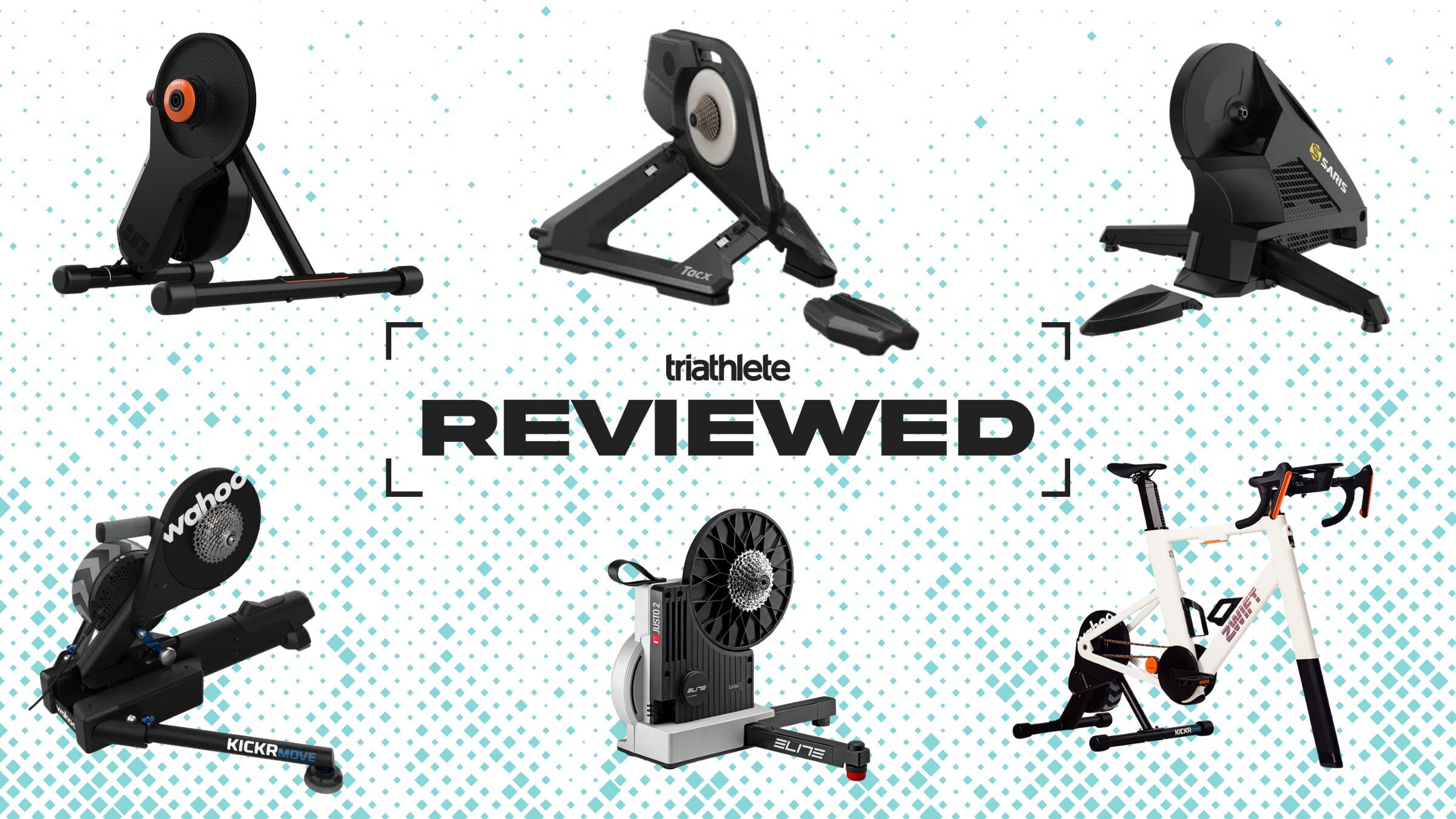
(Photo: Triathlete)
Best Indoor Smart Trainers
While the competition for the best indoor smart bike trainers has effectively consolidated and (slightly) thinned out, triathletes – and cyclists – have some of the best options ever. Riding indoors has benefits that go far beyond staying toasty in the winter: safety on the roads,fully controlled training sessions, efficiency, and even gamified communities to train with and race against.
For this article, we compiled four of the best smart trainers of 2024. These smart trainers are perfect for every triathlete, from beginner to professional, and are specifically designed for easy use and enjoyable indoor training.
There once was a time when indoor training was a painful bore, with nothing better to do but stare at a wall and pedal away. But thanks to the advent of indoor cycling apps, ERG mode, and smart trainers, indoor training can offer the same quality as outdoor training. This easy-to-use guide ranks each smart trainer based on various criteria, such as power accuracy, ride feel, portability, compatibility, and more. Each criterion is explained in the table below, and you can read on to learn which is the best smart trainer for you.
RELATED: Triathlete’s Guide to Indoor Training
Choosing the best indoor smart trainer for triathletes
| Value | More than just absolute cost, this is how much bang you get for your buck. 1-5; 5 being a great value. |
| Power Accuracy | Manufacturer’s claimed power accuracy |
| ERG Mode Capabilities | How well the trainer delivers ERG mode workouts |
| Ride Feel | How realistic, heavy, or soft the trainer feels. Tested during steady-state riding, racing, and sprinting |
| Wireless Capabilities | What is the trainer capable of: Bluetooth, ANT+, Wi-Fi, or all of the above? |
| Bike Compatibility | Can this trainer accommodate any bike, including brand-new disc-brake bikes or old bikes with an 8-speed cassette? |
| Portability | How easily can the trainer be packed and transported? |
Note: While the gear below was loaned out by the brands represented, all choices were selected independently by the tester without any promotional consideration or brand input.
The best bike trainers for triathletes, winter 2024-2025
Zwift Ride
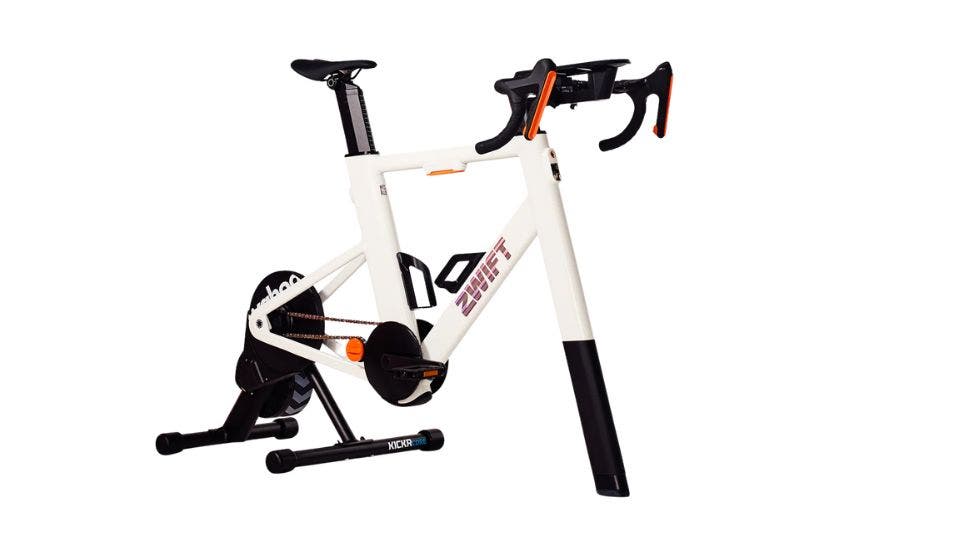
| Value | ★★★★★ |
| Power Accuracy | +/- 2% |
| ERG Mode Capabilities | ★★★★★ |
| Ride Feel | ★★★★ |
| Wireless Capabilities | ★★★★★ |
| Bike Compatibility | ★★★★★ |
| Portability | ★ |
The Zwift Ride was released in early summer 2024 and Zwift has been marketing it as a “smart bike” ever since.
The Ride is actually two separate pieces of hardware: a Wahoo KICKR Core smart trainer with Zwift Cog v1 and the Zwift Ride Smart Frame.
The Ride offers +/- 2% power accuracy, which isn’t quite as good as the Wahoo KICKR’s +/- 1% of accuracy, but is an improvement from the KICKR Snap’s +/- 3% accuracy. Additionally, the Ride features a maximum power output of 1,800 Watts, which again, doesn’t quite compete with the Wahoo KICKR’s max output of 2,200 Watts, but is an improvement from the KICKR Snap’s 1,500 Watts. Lastly, the Ride’s flywheel is 12 pounds, as compared to the KICKR’s 16 pounds.
In total, the Ride’s trainer and the bike frame weigh 78 pounds and take up nearly two feet of space horizontally and about 4.5 feet vertically, which is why the Ride earned a single star for “portability.” You can dismantle the trainer and the frame if you absolutely had to transport them in, say, the trunk of a car, but it’s bulky and cumbersome to do so. The Ride is ideally set up in one spot and used only in that place for the vast majority of its lifetime.
In terms of set up, the Ride can be assembled from start to finish in under 30 minutes when you follow the directions. The Zwift Cog comes mounted on the Wahoo KICKR Core and according to Wahoo, is “compatible with the great majority of 8-12 speed drivetrains.” If you wanted to use the Wahoo KICKR Core with the Zwift Cog with another non-Zwift Ride bike, you could do that, but you’d be missing out on the “smart” features of the Ride bike frame.
The Ride frame is easy to assemble and comes with the Allen key needed for any minor torquing. So long as the controllers are charged and the trainer is plugged in, it’s an easy final step to connect the controllers (via Bluetooth) and trainer (via Bluetooth or ANT+) to your Zwift account on your preferred smart device such as an iPad.
As for how riding the Ride felt … this is a tough one. For those who typically ride a road bike and can mimic their road bike fit on the Ride frame, riding the Ride feels smooth and realistic, especially with the Zwift controllers, which let you brake, shift, and steer within Zwift.
However, if you are a triathlete who is used to riding a time-trial or triathlon bike, it will be difficult to replicate your exact fit on the Ride. For starters, you will need to purchase aftermarket clip-on aero bars, as Zwift does not currently sell Ride-specific aero bars. Secondly, the geometry of the Ride frame does not mimic the more forward geometry of most triathlon bikes, so it will be very difficult to exactly replicate the feel of your triathlon bike fit.
In all, for $1,300, which is the same price as a standalone Wahoo KICKR, the Ride is a pretty sweet deal; you get both a trainer, a stationary bike frame, and “smart” aspects like the Zwift controllers. If you ride indoors a lot and don’t want to put your fancy racing bike through the wringer of corrosive sweat all winter, the Ride could be just the solution for you. -Kristin Jenny
Tacx NEO 3M
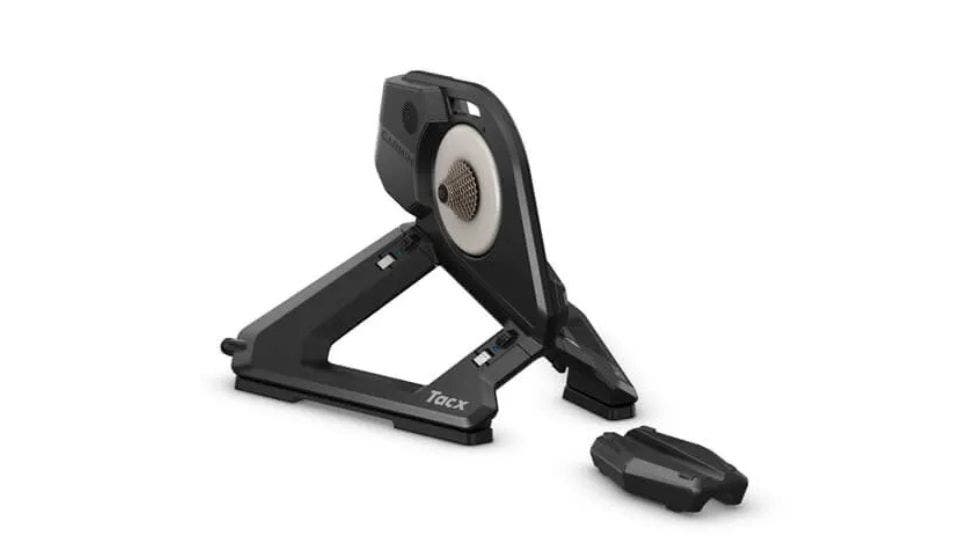
| Value | ★★ |
| Power Accuracy | +/- 1% |
| ERG Mode Capabilities | ★★★★★ |
| Ride Feel | ★★★ |
| Wireless Capabilities | ★★★★ |
| Bike Compatibility | ★★★★★ |
| Portability | ★★★ |
The Tacx NEO 3M is a top-of-the-line direct drive smart trainer. It is the most expensive smart trainer on the market, costing even more than some indoor smart bikes. But does the quality justify the cost?
In terms of specifications, the NEO 3M is basically the same as the Tacx NEO 2T, as well as comparable smart trainers from other manufacturers. The NEO 3M has a price tag of nearly $2,000, but it comes with a claimed +/-1% power accuracy, maximum power output of 2,200 Watts, and gradient simulation of up to 25%. One of the biggest differences between the NEO 3M and comparable trainers is its flywheel and road-feel simulation.
Using a set of 32 magnets inside the trainer body, the NEO 3M does not use an actual flywheel like other smart trainers. This changes the way the trainer feels while pedaling – some riders love it, while other riders hate it. Having ridden each of these trainers, I can say that the NEO 3M feels significantly different. Perhaps the magnetic resistance is something that you can get used to.
The NEO 3M includes forward drive, which keeps the flywheel spinning when you’re coasting downhill in a virtual world. This helps add to the realism of the trainer, setting it apart from its competitors. This feature only works when the trainer is plugged in; but you actually don’t need to plug the NEO 3M into the wall for it to function. Unlike comparable smart trainers, the NEO 3M has its power supply built into its frame behind the flywheel, that’s why this part of the trainer is so bulky.
One of the downsides of the NEO 3M is its lack of Wi-Fi connectivity. Tacx’s competitors launched Wi-Fi in their smart trainers more than a year ago, but the NEO 3M only offers ANT+ connectivity and dual Bluetooth wireless technology.
However, a few features set the NEO 3M apart, such as trainer movement and road-feel simulation. The NEO 3M comes with Tacx motion plates, offering fore-aft movement that can be locked out if you prefer. There is also some side-to-side movement built into the NEO 3M. Road-feel simulation is also built into the trainer, simulating the bumpiness of gravel, cattle guards, and other surfaces directly through the NEO 3M.
Like other smart trainers, the NEO 3M has foldable legs, which help increase its portability and storability. However, the NEO 3M is quite a large trainer – larger than comparable smart trainers with dimensions (when folded) of 27.4 x 14.0 inches (695 x 355 mm) and a weight of 52 pounds (23.6 kilograms). The trainer’s large frame is something to note when you’re setting up your bike – make sure you watch your derailleur cage, as it may bump up against the NEO 3M as you’re attaching your dropouts to the trainer. -Zach Nehr
Elite Justo 2
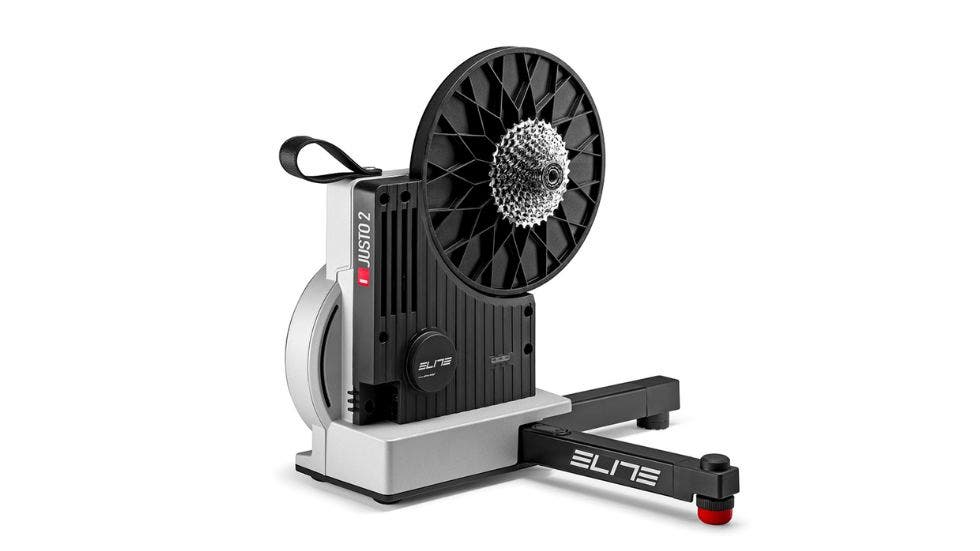
| Value | ★★★★ |
| Power Accuracy | +/- 1% |
| ERG Mode Capabilities | ★★ |
| Ride Feel | ★★★★★ |
| Wireless Capabilities | ★★★★★ |
| Bike Compatibility | ★★★★★ |
| Portability | ★★★★ |
Of all the trainers that I’ve ever tested, the Elite Justo 2 is my favorite. The overall capabilities are right in line with comparable smart trainers, and the price point isn’t as bad as you might think. For $1,200, the Elite Justo 2 offers +/-1% power accuracy, gradient simulation up to 24%, Wi-Fi connectivity, built-in Flex Feet, and 10 Hz data transmission.
There are three main differences between the Elite Justo 1 (officially called the Elite Justo) and Elite Justo 2: built-in Wi-Fi, a heavier flywheel (7.2 kilograms versus 6.2 kilograms), and a 12-speed cassette included with the trainer. The Wi-Fi and cassette are excellent features that effectively reduce the cost of the Justo 2 – previously, Wi-Fi connectivity devices and 12-speed cassettes were sold separately, adding up to an extra $100+.
The Justo 2’s ride feel is what separates it from the pack. While other smart trainers might feel heavy or clunky, the Justo 2 feels smooth and fast. It feels easier to spin up a heavy gear, or to quickly change cadences during a race. After talking to many elite racers, most prefer the ride feel of the Justo 2 to all other trainers.
While the Justo 2 doesn’t have motion built in, it does have Flex Feet on either side, which offer a small range of side-to-side movement. You can also swap these feet out if you prefer to limit trainer movement. Race Mode is available on the Justo 2, as well as 10 Hz data transmission, which Elite claims “ensures rapid transmission of power, speed, and cadence data.”
The biggest downside to the Justo 2 is ERG mode. For whatever reason, the resistance from the Justo 2 is not always steady while riding in ERG mode. You could be riding a 10-minute interval at 300w, for example: In ERG mode, the resistance should be constant, keeping you bang on 300w, but sometimes, the Justo 2’s resistance comes slightly in and out, so it feels like you are riding at 250w, then 350w, and then 300w. Not all users experience the same issue, and in my testing, this occurrence was extremely rare.
The Justo 2 is of course compatible with Elite accessories like the incline-simulating Rizer, and adaptive smart fan, Aria. Despite some issues with ERG mode, the Elite Justo 2 is my favorite overall smart trainer for 2024. -ZN
Wahoo KICKR Move
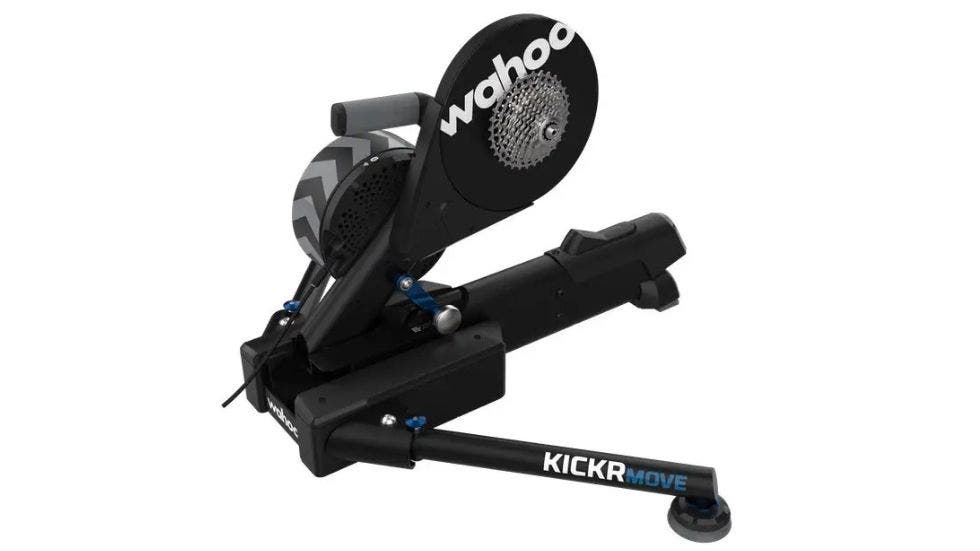
| Value | ★★ |
| Power Accuracy | +/- 1% |
| ERG Mode Capabilities | ★★★★★ |
| Ride Feel | ★★★ |
| Wireless Capabilities | ★★★★★ |
| Bike Compatibility | ★★★★★ |
| Portability | ★★ |
The Wahoo KICKR Move operates on the basis of unmatched innovation – never before has a smart trainer come with its own sort of fore-aft “rocker plate,” a built-in system that allows for subtle movements while riding. On top of the “Move system,” sits a Wahoo KICKR v6 – widely regarded as one of the best direct drive smart trainers ever made.
Let’s start with a quick summary of the Wahoo KICKR v6: It’s a $1,300 smart trainer with a claimed +/-1% power accuracy, maximum power output of 2,200w, and gradient simulation of up to 20%. The 7.3kg flywheel is controversial because, simply put, I don’t like it.
The Wahoo KICKR v6 has a unique ride feel that some riders love and others hate. To me, it feels a bit heavy, and sprinting requires a big-gear wind-up to get the timing right. Other riders tout the KICKR v6 as an industry leader, the best smart trainer in terms of ride feel, and the most “life-like” trainer available.
What’s new here is the addition of Wahoo’s Move system, an 8-inch track that allows for fore-aft movement. The Move system doesn’t allow for significant side-to-side movement – like some rocker platforms – but you can still lean a bit when sprinting or riding out of the saddle. Overall, the Wahoo KICKR Move is incredibly stable, and I never felt nervous or off-balance while riding on top of the movement-enabling platform.
Is the Wahoo KICKR Move worth an extra $300 compared to the Wahoo KICKR v6? For serious indoor cyclists, yes. The Move system’s slight movements add up over hours, days, and weeks of indoor riding.
While it doesn’t exactly feel like riding outside, the Wahoo KICKR Move feels much better than a stationary trainer during rides lasting longer than an hour. If you’re a casual indoor cyclist who doesn’t ride every day or might not appreciate the added movement during three-hour trainer rides, it’s a high price to pay for something you’ll hardly notice.
For more on this indoor smart trainer setup, check out our A First-Ride Review of the Wahoo Kickr Move Trainer. -ZN
Saris H3 Plus
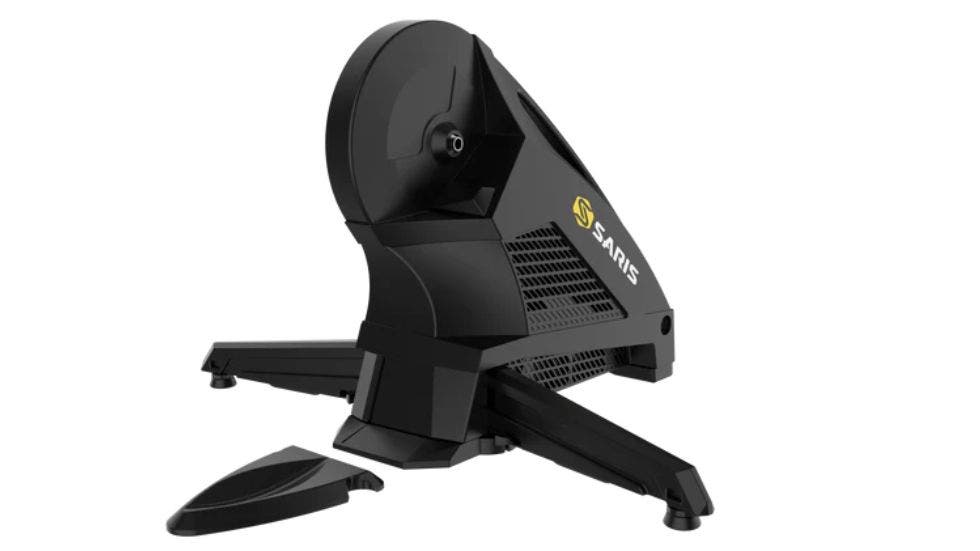
| Value | ★★★ |
| Power Accuracy | +/- 2% |
| ERG Mode Capabilities | ★★★★ |
| Ride Feel | ★★★★★ |
| Wireless Capabilities | ★★★★★ |
| Bike Compatibility | ★★★★★ |
| Portability | ★★★★★ |
The Saris H3 Plus is a revamp of the Saris H3, a favorite among serious indoor cyclists. Both the Saris H3 Plus and H3 are incredibly smooth, quiet, and efficient. The H3 Plus’ ride feel is the best of any trainer I’ve ever tested. There’s just something about the flywheel that rolls perfectly, spinning with momentum and never bogging down. I really enjoyed riding the H3 Plus, even if it doesn’t come with a movement platform.
One lagging feature is the H3 Plus’ power accuracy. At +/-2%, the H3 Plus isn’t as accurate as top-of-the-line smart trainers, but most users will not be bothered by this. So what’s the difference between the Saris H3 Plus and Saris H3? Just 12-speed compatibility, that’s all.
In other words, if you have a 12-speed setup, the H3 Plus is for you. If not, stick with the tried-and-true Saris H3.
Lastly, the H3 Plus’ ERG mode isn’t as smooth as that of comparable smart trainers. The feeling is still great, and I never had any significant issues, but it’s not perfect. In other words, the H3 Plus offers great value at $700, but it (unsurprisingly) doesn’t perform as perfectly as a $1,300 smart trainer. -ZN
JetBlack Victory
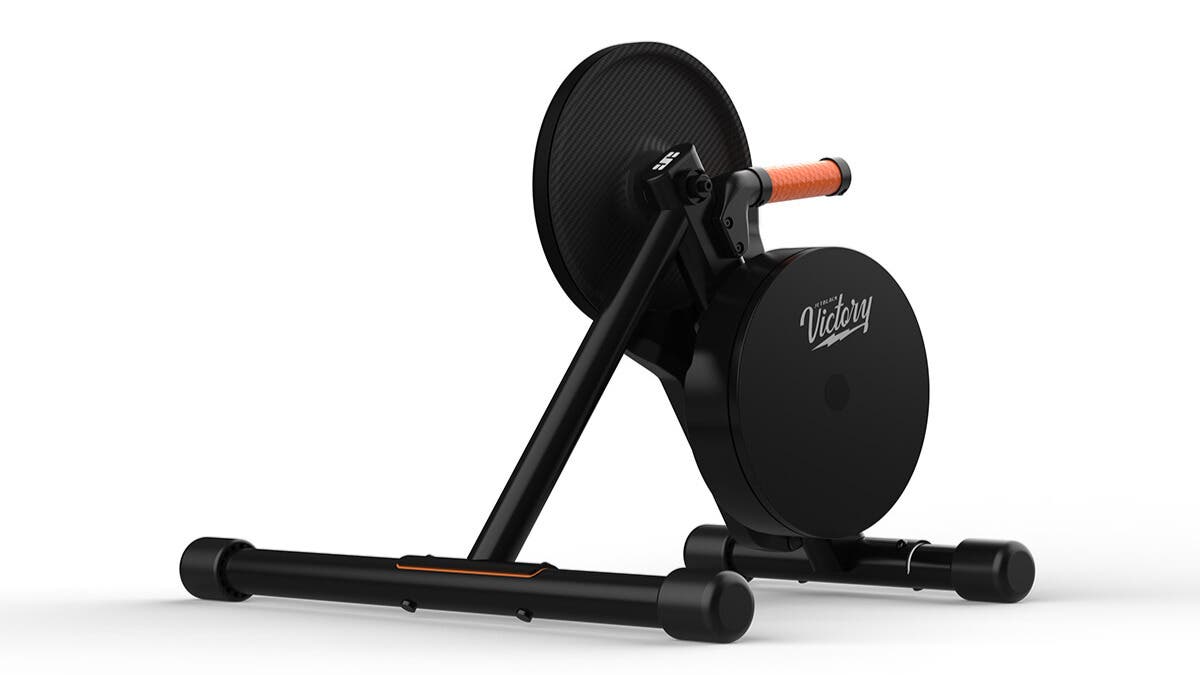
| Value | ★★★★★ |
| Power Accuracy | +/- 2% |
| ERG Mode Capabilities | ★★★★ |
| Ride Feel | ★★★ |
| Wireless Capabilities | ★★★★★ |
| Bike Compatibility | ★★★★★ |
| Portability | ★★ |
I in my full JetBlack Victory review, I was tempted to call it a budget smart trainer, but that would be a disservice to the quality and features that it offers. The Victory direct-drive smart trainer is listed at $400, less than half of the price of other high-quality smart trainers, and less than a quarter of the price of top-of-the-line smart trainers. You might be starting to wonder: What’s wrong with it?
After hours and hours of testing, I have failed to discover any major flaws. Sure the Victory doesn’t have the best ride feel in the world, but it is far from the worst. The Victory doesn’t have +/-1% power accuracy, but this is irrelevant for 99% of its users. Power accuracy is a manufacturer’s claim anyway, and after extensive testing, the manufacturer’s claim rarely lines up with reality.
Overall, the JetBlack Victory is one of the better smart trainers that I’ve ever tested. You will notice a lot of similarities between the Victory, Wahoo KICKR Core, and Zwift Hub. That’s because JetBlack, Zwift, and Wahoo have all collaborated at various points to produce these high-quality, budget-price smart trainers.
The Victory’s ride feel is nearly that of the Wahoo KICKR Core. It is a polarizing ride feel, one that I don’t love personally, but that many other cyclists do. At the time of this writing, the JetBlack Victory comes with a Zwift Cog and Zwift Click, which enable virtual shifting in Zwift only. Once the Victory comes back into stock, it may be available to purchase with a cassette of your choosing (plus, the Victory is compatible with 9, 10, 11, and 12-speed cassettes).
Portability is one of the Victory’s few downsides, since the trainer’s feet are fixed in position. This can make the Victory a bit challenging to move and store, especially if you are training in a small room or apartment.
In line with comparable direct-drive trainers, the Victory offers a maximum gradient simulation of 16%, and maximum wattage of 1,800W. It is also compatible with Wi-Fi and USB in addition to the usual ANT+ and Bluetooth, which is a huge plus for a trainer at this price point. Auto calibration is included as well, so there are few features that you are missing here compared to top-of-the-line smart trainers that cost $2,000.
Overall, the JetBlack Victory is a fantastic smart trainer designed especially for beginners and the budget-friendly. There are only a handful of downsides to the Victory, but these won’t bother the vast majority of indoor cyclists. The Victory could be the perfect trainer for a first-time buyer: It is easy to set up and even easier to use, and it costs a fraction of what the smart trainer market offered only a few years ago. Given its overall quality and features, the JetBlack Victory is bordering on the description of “unbeatable value.” -ZN